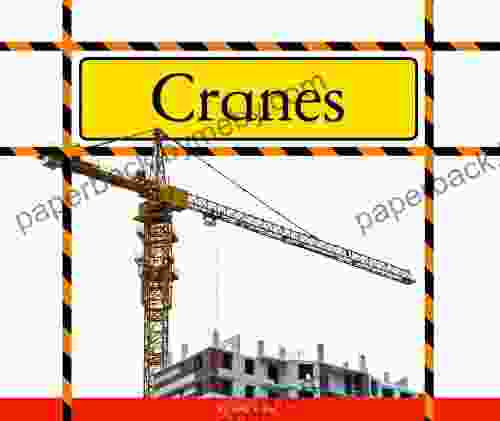Cranes: Big Machines at Work

 Cranes are engineering marvels that have shaped the skylines of cities and transformed industrial landscapes. These mighty machines, with their towering heights and powerful lifting capabilities, are indispensable tools in the construction, manufacturing, and shipping industries. In this article, we will delve into the fascinating world of cranes, exploring their history, types, and awe-inspiring capabilities.
Cranes are engineering marvels that have shaped the skylines of cities and transformed industrial landscapes. These mighty machines, with their towering heights and powerful lifting capabilities, are indispensable tools in the construction, manufacturing, and shipping industries. In this article, we will delve into the fascinating world of cranes, exploring their history, types, and awe-inspiring capabilities.A Brief History of Cranes
The origins of cranes can be traced back to ancient times, with simple lifting devices used in construction and warfare. The earliest known cranes were wooden structures powered by human labor. In the Middle Ages, more advanced cranes emerged, utilizing waterwheels and windmills as power sources. The Industrial Revolution brought about a surge in crane development, with the invention of steam-powered cranes and the of iron and steel in their construction. Today, cranes have become highly sophisticated machines, incorporating cutting-edge technology and advanced control systems.
Types of Cranes
The world of cranes is vast and diverse, with numerous types designed for specific applications. Let's explore some of the most common types:
4.4 out of 5
| Language | : | English |
| File size | : | 13710 KB |
| Print length | : | 24 pages |
| Screen Reader | : | Supported |
- Tower Cranes: These are the giants of the crane world, towering over construction sites and providing a panoramic view of the surrounding area. Tower cranes are typically used to lift and move heavy materials and components during high-rise building construction.
- Mobile Cranes: As the name suggests, these cranes are highly mobile and can be easily transported from one site to another. Mobile cranes are versatile machines that find applications in a wide range of industries, including construction, infrastructure maintenance, and industrial settings.
- Crawler Cranes: These cranes are characterized by their tracked undercarriages, which provide stability and allow them to navigate rough terrain. Crawler cranes are often used in heavy-lifting applications, such as bridge construction and industrial plant maintenance.
- Rough Terrain Cranes: Similar to crawler cranes, rough terrain cranes feature tires instead of tracks. This combination of mobility and off-road capabilities makes them ideal for construction sites with uneven or unpaved surfaces.
- Overhead Cranes: These cranes are mounted overhead in factories, warehouses, and other industrial facilities. Overhead cranes are primarily used for material handling and transportation, efficiently moving heavy loads within indoor environments.
How Cranes Work
Cranes operate on the principle of leverage, using a combination of pulleys, cables, and hydraulic systems to lift and move heavy objects. The basic components of a crane include:
- Boom: The long, horizontal arm of the crane that extends outward to lift and move objects.
- Cab: The enclosed cabin located at the top of the boom where the crane operator sits and controls the machine.
- Counterweight: A heavy weight attached to the rear of the crane to balance the load and ensure stability.
- Hoist: A winch-like mechanism that raises and lowers the load.
- Trolley: A device that travels along the boom, allowing the crane to move the load horizontally.
Crane Safety
Operating cranes requires a high level of skill and training. Due to their immense size and lifting capabilities, crane safety is of paramount importance. Safety measures include:
- Inspection and Maintenance: Cranes undergo regular inspections and maintenance to ensure they are in good working condition.
- Operator Certification: Crane operators must be certified and undergo ongoing training to demonstrate their competence.
- Site Preparation: The site where the crane will operate is carefully prepared to ensure a stable and safe environment.
- Load Management: Cranes are carefully designed and engineered to lift specific loads. Loading beyond the crane's capacity is strictly prohibited.
Cranes are essential machines that have played a pivotal role in the development of our modern world. From towering skyscrapers to vast industrial complexes, these mighty machines have shaped our built environment and transformed industries. Understanding the history, types, and capabilities of cranes gives us a deeper appreciation for their importance and the ingenuity that drives human progress.
4.4 out of 5
| Language | : | English |
| File size | : | 13710 KB |
| Print length | : | 24 pages |
| Screen Reader | : | Supported |
Do you want to contribute by writing guest posts on this blog?
Please contact us and send us a resume of previous articles that you have written.
 Book
Book Novel
Novel Page
Page Chapter
Chapter Text
Text Story
Story Genre
Genre Reader
Reader Library
Library Paperback
Paperback E-book
E-book Magazine
Magazine Newspaper
Newspaper Paragraph
Paragraph Sentence
Sentence Bookmark
Bookmark Shelf
Shelf Glossary
Glossary Bibliography
Bibliography Foreword
Foreword Preface
Preface Synopsis
Synopsis Annotation
Annotation Footnote
Footnote Manuscript
Manuscript Scroll
Scroll Codex
Codex Tome
Tome Bestseller
Bestseller Classics
Classics Library card
Library card Narrative
Narrative Biography
Biography Autobiography
Autobiography Memoir
Memoir Reference
Reference Encyclopedia
Encyclopedia Robert D Atkinson
Robert D Atkinson Kevin Roberts
Kevin Roberts Kevin Estela
Kevin Estela Ryan S Walters
Ryan S Walters Peter Hoffman
Peter Hoffman Matt Doeden
Matt Doeden Ken Tilbury
Ken Tilbury Margot Adler
Margot Adler Siri Hustvedt
Siri Hustvedt Michelle Knudsen
Michelle Knudsen Steffen Wittenbecher
Steffen Wittenbecher Steve Ramirez
Steve Ramirez Mark Kulek
Mark Kulek Patrick Barrett
Patrick Barrett Martina Mars
Martina Mars Olga Ortiz
Olga Ortiz Kim Dana Kupperman
Kim Dana Kupperman Stuart James Amei
Stuart James Amei Kim E Barrett
Kim E Barrett Sabrina Chevannes
Sabrina Chevannes
Light bulbAdvertise smarter! Our strategic ad space ensures maximum exposure. Reserve your spot today!

 Fletcher MitchellUnveiling the Enchanting World of Pandora: A Captivating Journey of Discovery...
Fletcher MitchellUnveiling the Enchanting World of Pandora: A Captivating Journey of Discovery...
 Jeremy MitchellEmbark on an Enchanting Adventure with Kimetsu No Yaiba Vol. [Volume Number]:...
Jeremy MitchellEmbark on an Enchanting Adventure with Kimetsu No Yaiba Vol. [Volume Number]:... Hank MitchellDive into the Easter Festivities with "An Eggstra Special Easter LEGO Iconic"
Hank MitchellDive into the Easter Festivities with "An Eggstra Special Easter LEGO Iconic" Kelly BlairFollow ·15.3k
Kelly BlairFollow ·15.3k Joel MitchellFollow ·17.9k
Joel MitchellFollow ·17.9k Walt WhitmanFollow ·19.8k
Walt WhitmanFollow ·19.8k David MitchellFollow ·4.5k
David MitchellFollow ·4.5k Braeden HayesFollow ·2.8k
Braeden HayesFollow ·2.8k Ethan GrayFollow ·5.8k
Ethan GrayFollow ·5.8k Clinton ReedFollow ·17k
Clinton ReedFollow ·17k Frank ButlerFollow ·18.7k
Frank ButlerFollow ·18.7k

 Isaac Asimov
Isaac AsimovEmbark on an Epic Adventure: The Colorado Trail 9th...
Unveiling the Treasures of the Colorado...

 Clinton Reed
Clinton ReedUltimate Football Heroes: Uncover the Gridiron Greatness...
Enter the World...

 Ibrahim Blair
Ibrahim BlairUnveiling the Secrets of Stolen Focus: A Journey to...
In today's relentless digital...

 Colt Simmons
Colt SimmonsRediscover the Founding Father's Vision: Thomas Jefferson...
Immerse Yourself in the Unedited Words of...

 Juan Butler
Juan ButlerExcel in Language Learning: The Ultimate Self-Study...
Unlock Your Language Potential with Our...
4.4 out of 5
| Language | : | English |
| File size | : | 13710 KB |
| Print length | : | 24 pages |
| Screen Reader | : | Supported |








